You spent a lot of time on a crucial Word document and, just when you save, your machine either shuts down or stops functioning, leaving your work unsaved. You may wonder whether can you recover an unsaved word document. The good news is you can. Here, you will learn why this happens and how to recover unsaved Word documents.
Common Causes of Unsaved Word Files
Losing an unsaved Word document can be frustrating, but it usually happens due to a few common reasons. Understanding why your document didn’t save properly can help you avoid this situation in the future.
- Unexpected power outages or Word/system crashes before saving.
- Manually closing without saving the document.
- If AutoSave/AutoRecover features are disabled, changes won’t be backed up automatically.
- Bugs or file damage can stop documents from saving properly.
- Disk errors, USB problems, or full drives can block saving.
- Saving can fail due to file type mismatches or plug-in conflicts.
Unsaved Word Document Recovery Method Comparison
| Method | Success Rate | Difficulty | Time | Limitations |
| Data Recovery Tool | High | Easy | 3-5 Min | Paid or free, best used immediately before data is overwritten. |
| Word AutoRecover Feature | Medium | Very Easy | 30 Sec | Only functions if AutoRecover is enabled. |
| Manual Backup Search | Medium | Moderate | 6-8 Min | Requires navigating hidden folders, functions only if backup options were enabled. |
| Temporary Files | Low | Moderate | 6-8 Min | May not always contain complete documents, temp files are often deleted quickly. |
Step-by-Step Guide: How to Recover Unsaved Word Documents
Hereare four options for retrieving an unsaved document in Word:
Option 1: Recover Unsaved Word Document Using 4DDiG
When Microsoft Word crashes, it often leaves behind temporary versions of unsaved documents in a hidden AutoRecovery folder on your computer. A specialized unsaved Word document recovery tool like 4DDiG Data Recovery can retrieve them. It checks both the default AutoRecover folder and other possible locations to find unsaved Word document. Here’s what more this tool offers:
- Reclaims corrupted, deleted, unsaved or formatted MS Office files with just a few clicks.
- Offers an impressive success rate and a free trial.
- Shows a preview of files before you restore them.
- Recovers unsaved word document from various storage devices, including PCs/Laptops, USBs, SD cards, etc.
- Fully compatible with Windows operating systems, including Windows 7, 8, 10, and 11.
- No tech skills required.
Here’s a guide on how to recover unsaved Word file with the help of 4DDiG:
Step 1: Install and launch the tool on your Windows machine. Then, select the drive where your unsaved Word documents were lost (in my case, it’s the C: drive). Click “Scan” to proceed.
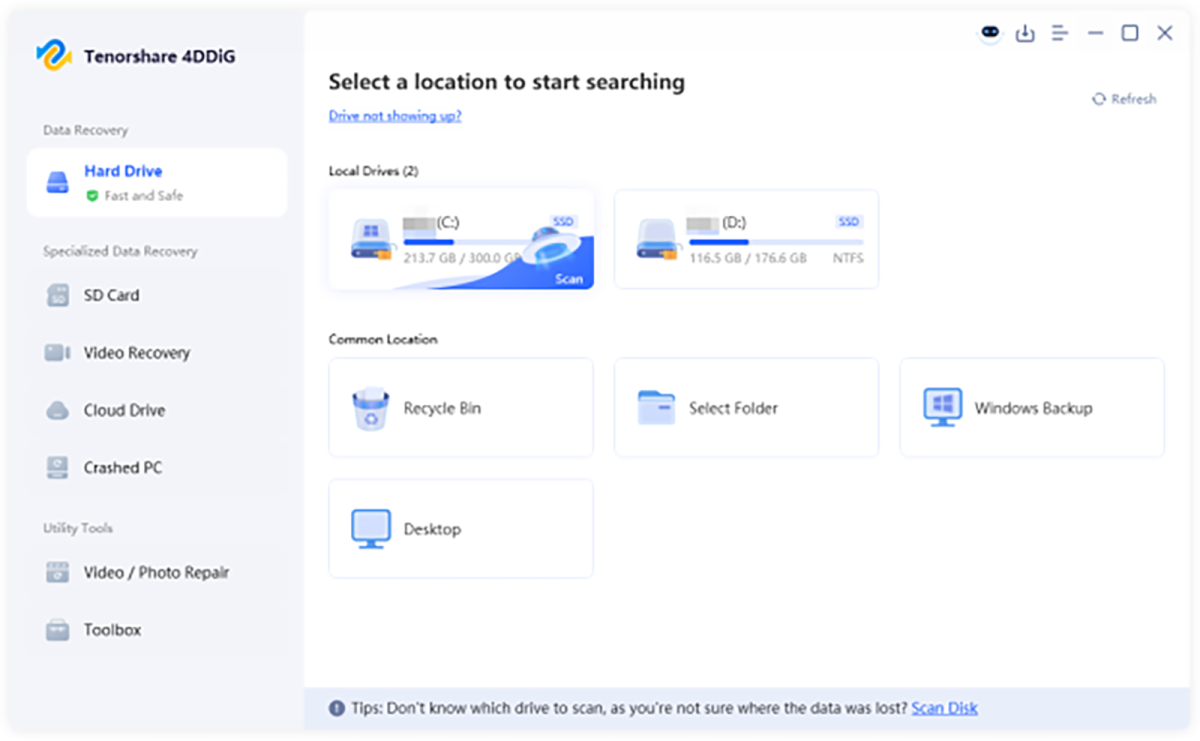
Tenorshare
Step 2: Once the scan is complete, click on the “Type” tab in the left panel. Then, select “Unsaved Documents” to locate your unsaved files.
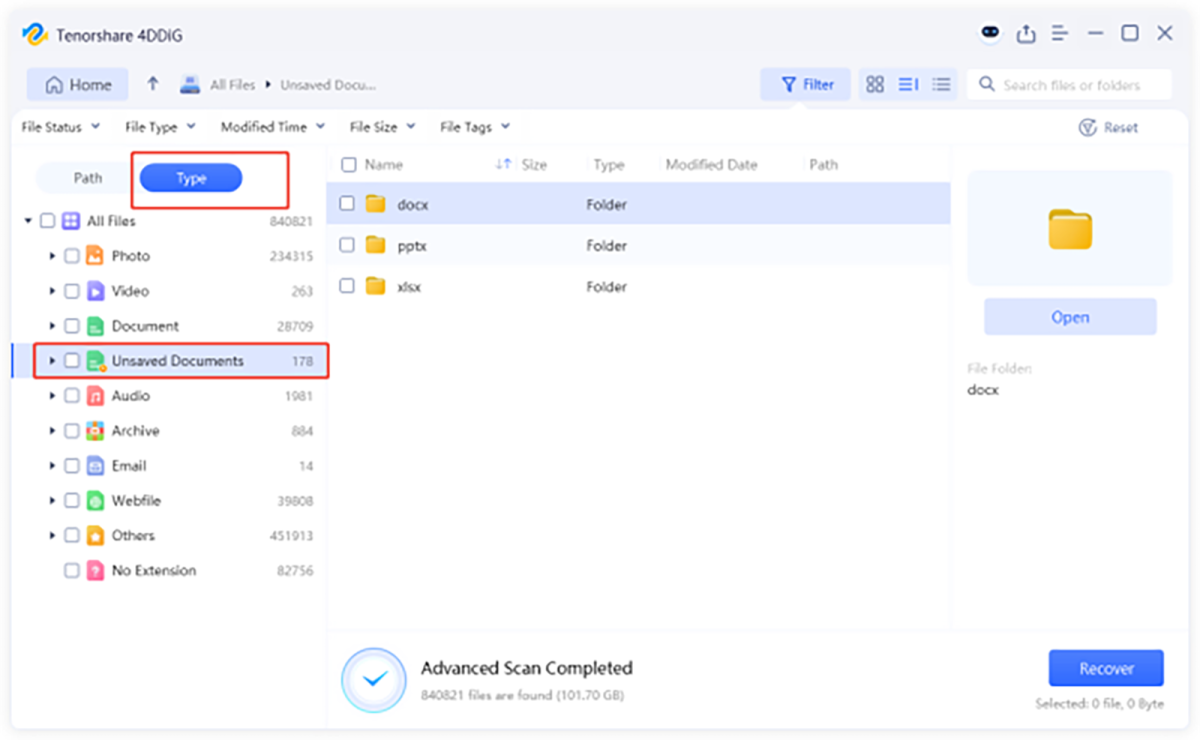
Tenorshare
Step 3: Preview and select the files you wish to restore. Finally, click “Recover” to save them to a secure location on your computer.
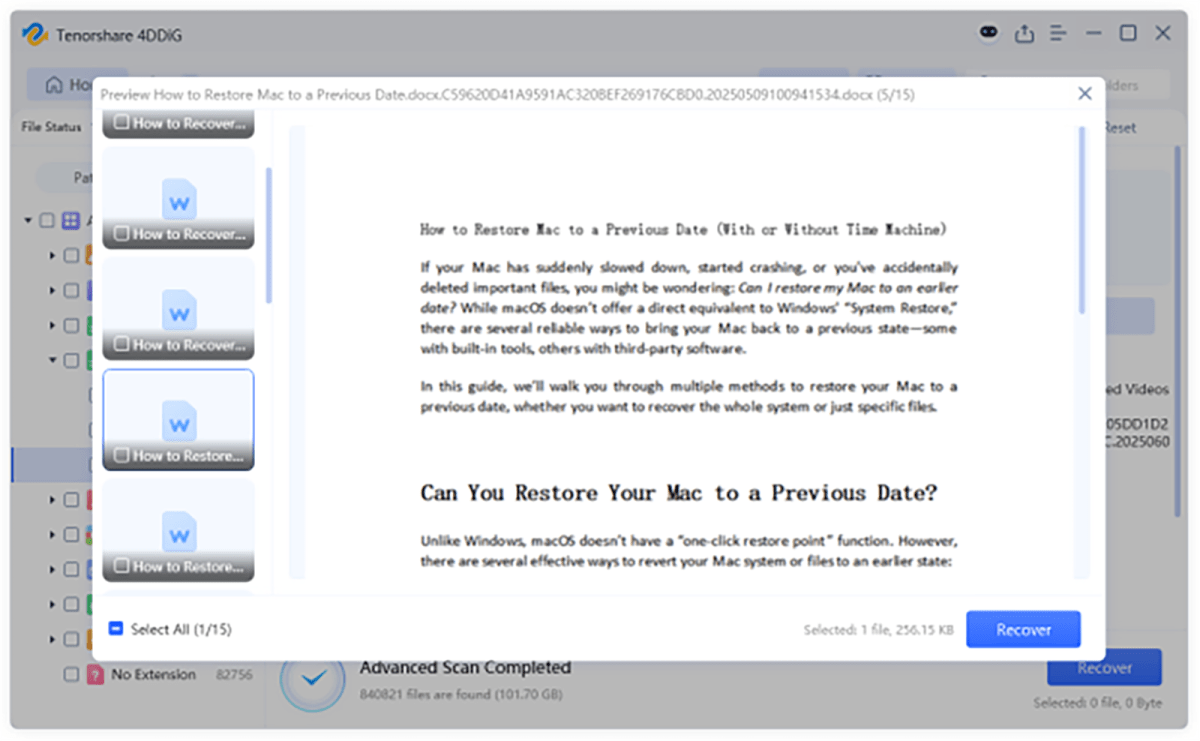
Tenorshare
Option 2: Recover Unsaved Word Document by Built-in Features
AutoRecover is a Word feature that automatically saves temporary backups. It can help recover unsaved Word document on Windows 10/11, but only if it was turned on before the file was lost. If you’ve already activated it, here are two ways to use Auto Recovery to get back unsaved Word documents:
Recover from the Document Recovery pane:
Step 1: Reopen Word. A Recovery panel may show up with Word files marked [Recovered] or [Original].
Step 2: Click a file. Then, use “Save As’ to keep it permanently.
If the panel doesn’t appear:
Step 1: Head to “File.” Then, choose “Info.” Next, tap “Manage Document.”
Step 2: Select “Recover Unsaved Documents.” Find and open the Word file. Then, click “Save As” to keep it.
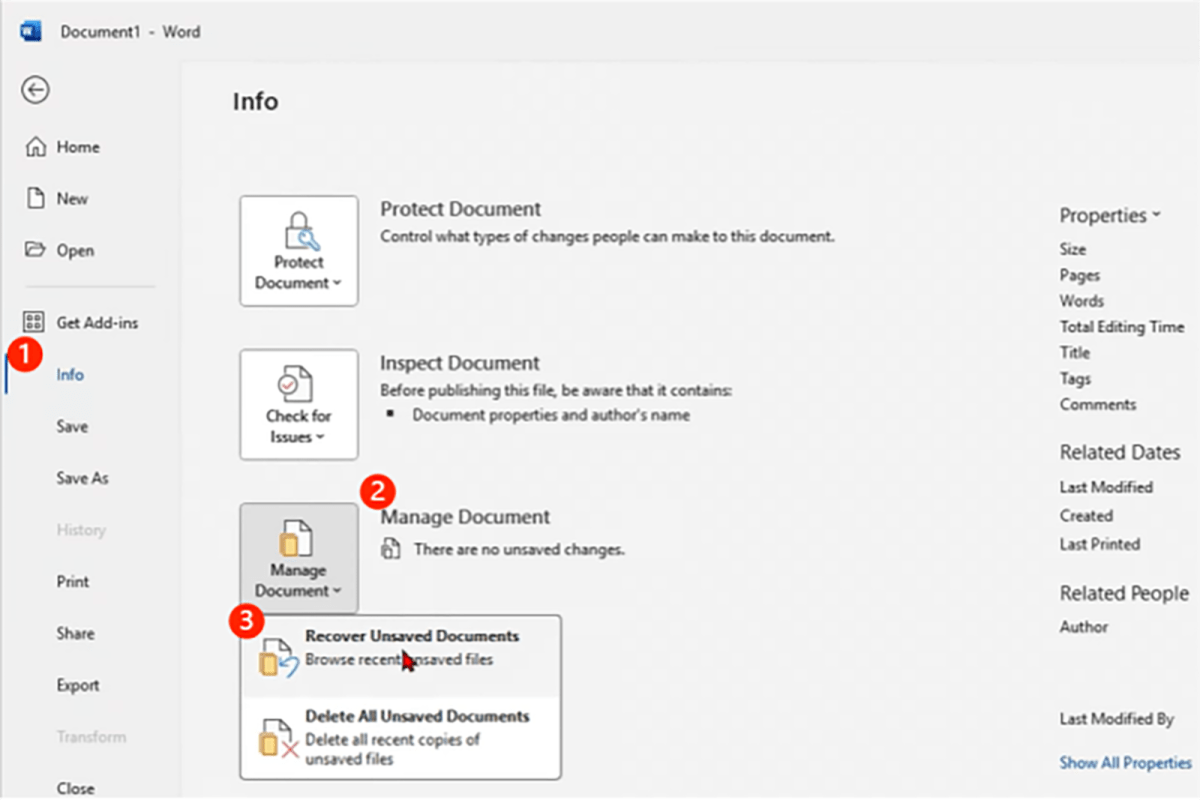
Tenorshare
Option 3: Search for Backup Files Manually
If Word’s AutoRecover feature doesn’t function, you can manually find unsaved Word documents. AutoRecover files have a “.asd” extension and are made while working on unsaved documents, whereas backup files have a “.wbk” extension and are created if the “Always create backup copy” option is turned on in Word settings. Here’s how to recover an unsaved Word document by looking for its backup manually:
Step 1: Open “File Explorer.” Then type the following path in the address bar: C:\Users\UserAccount\AppData\Local\Microsoft\Office\UnsavedFiles
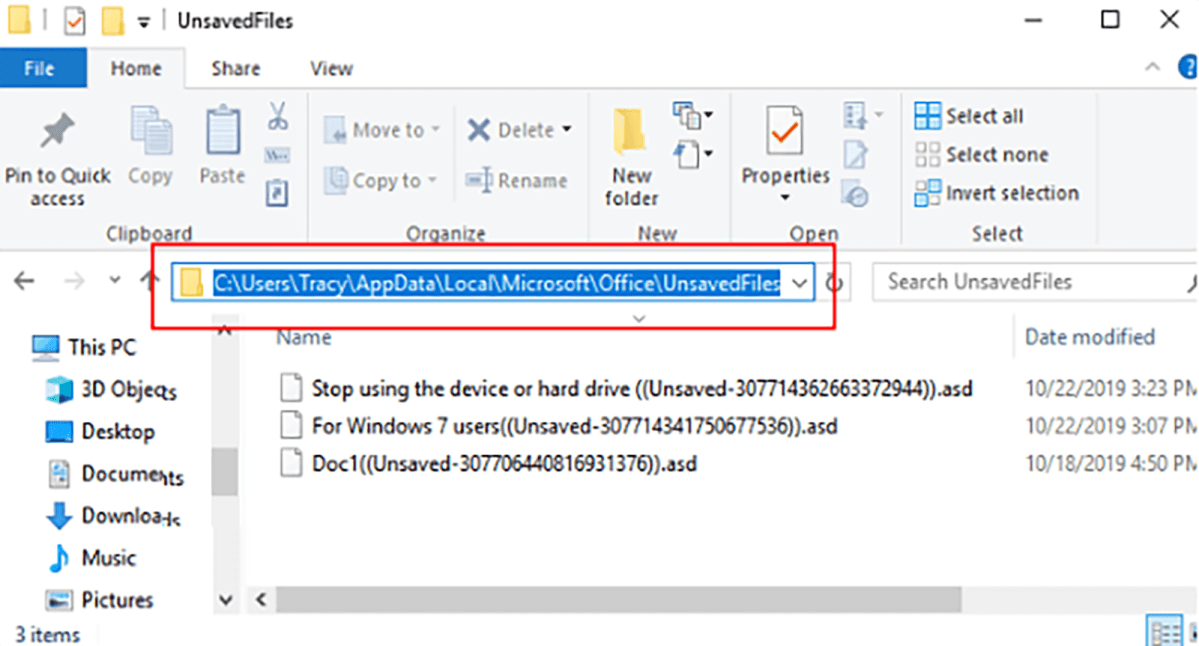
Tenorshare
Step 2: Find “.asd” and “.wbk” files. Then, to open the “.asd” file, execute Word > File > Open > Browse. Set file type to “All Files (.*).”
Step 3: Select the “.asd file” you wish to recover and open it. Use “Save As” to save it as a “.docx” file.
Step 4: To open a “.wbk” file, rename the file extension to “.docx.”
Option 4: Recover from Temporary Files
While you work, Word creates “.tmp” (temporary) files that you can manually search to find a copy of your unsaved document. If found, you can move and save it to restore your work. Here’s how to retrieve an unsaved document in Word from the temporary files folder:
Step 1: Open File Explorer. Then, type the following path in the address bar: C:\Users\YourUsername\AppData\Local\Temp

Tenorshare
Step 2: Select and right-click the temporary files for Word. Then, press “Ctrl + C.”
Step 3: Go to the folder where you want to save them. Right-click. Next, choose to press “Ctrl + V.’
Step 4: Once copied, open the Word files and continue working.
Tips to Avoid Losing Unsaved Word Documents Again
Let’s be honest—no one expects their computer to crash or Word to freeze right before clicking “Save.” That’s why is a good idea to set up Word’s built-in backup options ahead of time. These simple settings can save you a lot of stress down the road.
Turn on AutoRecover
Step 1: Open Microsoft Word.
Step 2: Go to File > Options > Save.
Step 3: Make sure “Save AutoRecover information every X minutes” is checked.

Chcete-li přidat komentář, přihlaste se
Ostatní příspěvky v této skupině

Great gaming laptops don’t have to be super expensive, and this Gigab

Xbox’s latest video was ostensibly about a “strategic, multi-year par

I don’t know what the situation is like in your home, but I think I h


Security cameras are kind of a necessity these days. Thankfully, you

Hey, there! Have you ever just wanted to quickly preview images or ot

